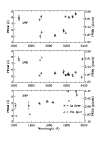 Figure 2.19: Low-dispersion spectral resolution.
Figure 2.19: Low-dispersion spectral resolution.
A study of the NEWSIPS spectral resolution was performed by measuring the FWHM of several features for the emission line sources V1016 Cyg, RR Tel, AG Dra, CI Cyg, and Z And. The analysis indicates a slight improvement in the NEWSIPS resolution (approximately 10% for the SWP and 7% for the LWR) over the IUESIPS results reported by Cassatella, Barbero, and Benvenuti (1985). Plots of the spectral resolution data are shown in Figure 2.19. The small-aperture data are slightly offset in wavelength from the large-aperture data for clarity.
LWP - Large-aperture spectral resolution is best between 2700 and 2900Å with an average FWHM of 5.2Å and decreases to approximately 8.0Å on either side of this range. Small-aperture resolution is optimal between 2400 and 3000Å with an average FWHM of 5.5Å and decreases to 8.1Å at the extreme wavelengths.
LWR - Maximum resolution in the large aperture occurs longward of 2300Å, with an average FWHM of 5.3Å, while shortward of this point the FWHM decreases to 7.7Å. Small-aperture resolution is best from 2700-3200Å, with an average FWHM of 5.4Å, and decreases to 7.7Å at 3350Å and 7.5Å shortward of 2400Å.
SWP - The best resolution occurs around 1200Å, with a FWHM of 4.6Å in the large aperture and 3.0Å in the small aperture, and gradually worsens towards longer wavelengths: 6.7Å at 1900Å in the large aperture and 6.3Å in the small. On average, the small-aperture resolution is approximately 10% better than the large-aperture resolution.
 Figure 2.19: Low-dispersion spectral resolution.
Figure 2.19: Low-dispersion spectral resolution.